Against All Oddities: Car storage in a derelict sock factory?
Is this my dumbest escapade yet? For what I think are justifiable reasons, I am now the leaseholder of a derelict North Carolina sock factory.
Fond as I am of warm feet, this strategy—and this may come as a shock to you—is more about car storage. To be able to park and/or shelter my current fleet of ten involves a sizable network of generous friends and family. The hulks are split between four locations: a cow lot on a farm, a sketchy Quonset hut next to a modular home, a carriage house in Charleston, and (increasingly these days) our yard at home in Statesville.
Wanting the keep the place looking more “urban farm” than “urban junkyard,” as well as ease the burden I place on others, I started keeping an eye out for expansion opportunities. (Thinning the herd did not cross my mind, nor will it, likely.)
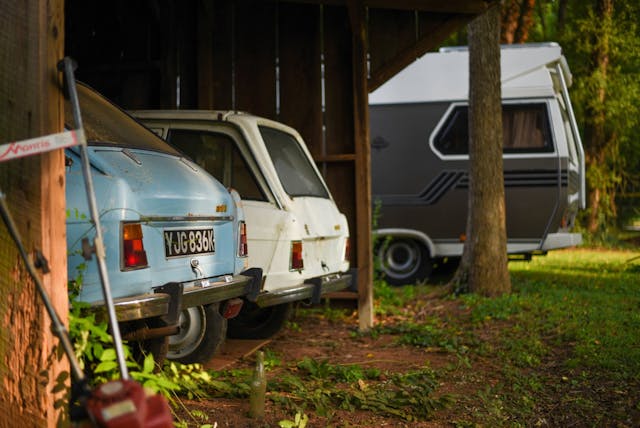
The region I live in, north of Charlotte, is at the epicenter of a decades-long crumbling textile and furniture industry. That has, sadly, led to an abundance of suffering mill properties. Usually, my wife and I fail to take note of these forlorn complexes while out on our rural explorations. Especially not for practical applications—the size and age of such structures, combined with their usually far-out locations and complexity of securing a lease or ownership, is daunting.
Then, one such building found me. While my wife and I were scoping out fall crops at the farm and garden supply store, a whole 300 yards from home, I beheld the big red barn-slash-drug-and-crime-hotspot I had walked by many times before in a different light. It was rough, sure, but could it be… an opportunity? Because what says “blight abatement” like a big shack brimming with crusty Soviet, French, and Italian project cars?
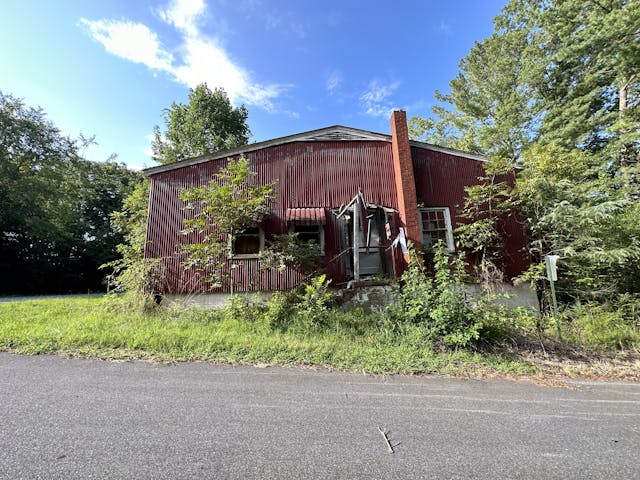
Guessing it may belong to the garden supply store owner, I shot my shot. “So, what’s the story with that red building,” I probed. “Why, you wanna buy it?” he joked.
A seventy-plus-year native of the region, the gentleman filled me in on the property’s history: The land was once a storage point for munitions in the Civil War. Then, the present structure was developed into a sock factory. Following a stint as a fertilizer plant, it became a storage building. Today it is empty, and a considerable personal injury and tax liability. I accepted his offer to at least take a look inside.
The sleeping bags, trash, and structural deficiencies I witnessed upon entry were sufficiently horrifying. I had seen what I needed to see. For some reason, I still took the weekend to think about it and came back to the garden store on Monday. “I’m not interested in selling right now, but make me a rental offer I can’t refuse,” the owner playfully invited.
My proposal: One year’s rent equivalent to the yearly property tax. I’d clean it out and secure it and beat back the jungle. Neither of us had any liability. With that, we shook on it.
“You’re insane,” my wife added. He nodded at her in agreement.
***
So, I’ve got a year to try things out. I’m up on my tetanus shots, and at worst, I figured, I’d die in a pile of collapsed wood and metal lose a grand while fixing up a neighborhood eyesore. Onward ho!
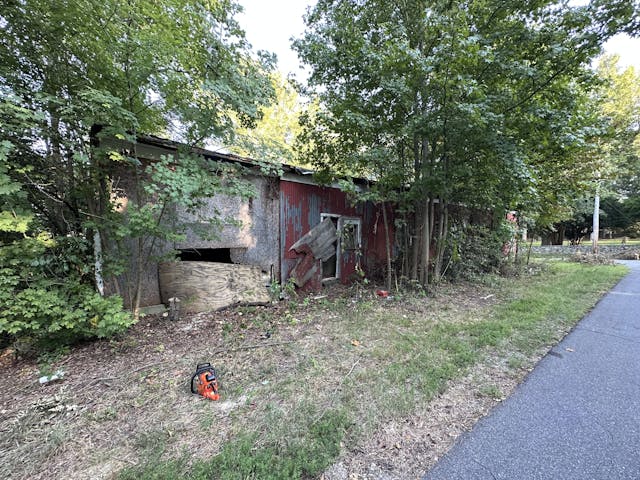
It took a full 24 hours of heavy breathing and self-reflection before I asked my neighbor Lee for help clearing the place out. The first major issue: remove the thick layer of trash on the floor. The second problem was more dramatic: the only external door was missing, and in its place overgrown trees. No point dealing with the latter issue while we still needed to haul out all that crap.
Not afraid of tasks that lead to bodily infections, I started off by getting an industrial dumpster delivered. Shoveling loads of used plant starter trays—thousands of them—into an enormous metal ben was oddly satisfying. Like a drawn-out, dystopian game of filthy Tetris. Of course, the fulfillment of pulling up urine-soaked carpet while trying not to cut your foot on shattered crack pipes is… less cathartic.

I escaped that endeavor with merely a sinus infection, which counts as a win. Next job? Creating a large, sliding barn door on the end of the building, so as to take advantage of the generous 50′ x 20′ loading dock slab. With the integrity of the existing wall in major question, Lee and I started by clearing the brush and creating a barely-adequate roof support out of 2 x 4s and a cheap blue aluminum floor jack from a familiar big-box store. After three evenings, two design revisions, one demolition, and somewhat careful reconstruction, we had a sturdy header off of which we could hang a door. Given the factory’s location a stone’s throw from our houses, Lee and I could pop over to the factory at a moment’s notice. It really allowed for quick progress.
Earlier in this article, I alluded to the, ah, security situation in this structure. I was relatively confident that cleanup and the appearance of regular use would deter most unwelcome parties. (The latest born-on date of any of the beer cans in there was pre-COVID, and the séance candles all were wet and disorganized. I wasn’t too worried.) Still, I wanted eyes and ears, though with no electricity that was going to be a hassle.
Power was a problem for another day. My best bet seemed to be an experiment, in which I’d place in the factory a kind of sacrificial anode that might tempt scrappers and graffiti artists. Luckily, I had just the car.

Regular readers will recall my new work colleague Matt F., who I’ve been immersing in my grungy brand of North Carolina car culture in our off time. His next training course: steering my spare Citroen Ami through downtown Statesville while being towed by my good Citroen Ami. The distance of this trip: one half-mile.
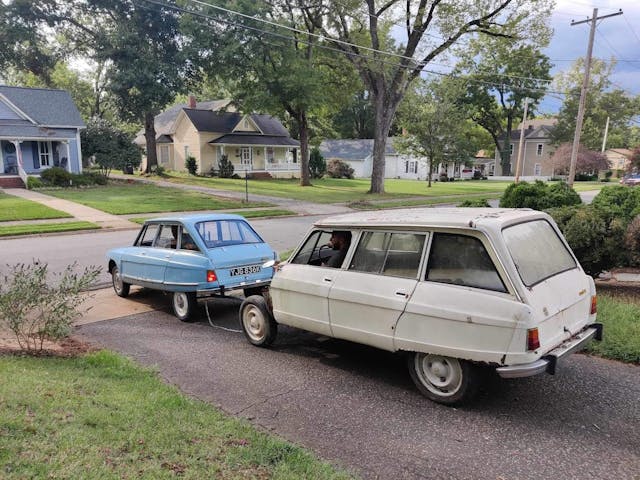
Naturally, there was an open house going on two doors down. Real estate agents always come prepared with rebuttals against struggling schools and lackluster landscaping, but I considered this a true test of their creativity. As we exited the driveway in the path of a young couple and their speechless real estate agent, I remembered a very similar scenario playing out once before. It was in Charleston, and the cars in tow were beige utes—Aussie Ford Falcon and a VW Caddy. Anyway! At least now this couple knew what they were dealing with, and the agent has some time to think of a convincing explanation before the next showing.
We made it down the road without issue, and shove up the removable ramps the Ami snuggled its way into the back corner of the factory.
***
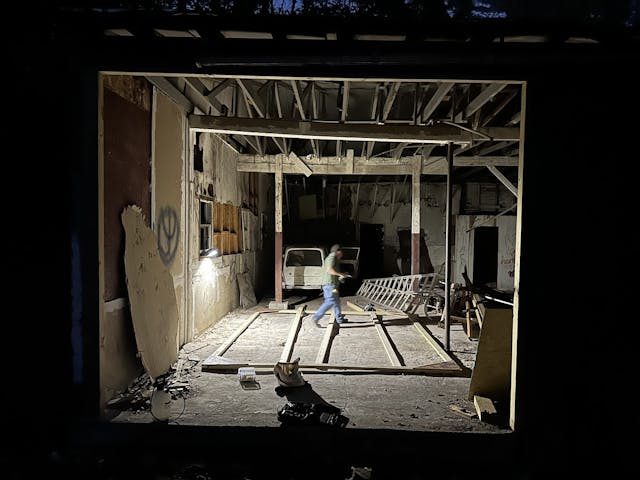
Two weeks passed. None of my bait tools or vehicles were stolen or even vandalized! I judged it safe to proceed with door construction. We created the sliding 10′ x 14′ monolith from salvaged tin and yet more 2 x 4s, and we hung it using every textbook Egyptian rolling and levering technique we could muster. With no light, no equipment, and thankfully no hernias, the two of us jostled the 400-pound slab onto its sliding rail. It looked like trash, and also, just right.
I don’t expect that I’ll ever be able to buy this property outright, at least not anytime soon. So I’ve set a kind of soft limit to what I’m willing to do. So far it cost me a decent number of hours and $800 for this cleanup and upfit. It might take a little more for the place to meet its main goal: a safe place inside which I can store cars. Maybe that doesn’t live up to the land’s munitions-turned-sock-factory legacy, but I’d like to think my oddball car collection will class up the joint.
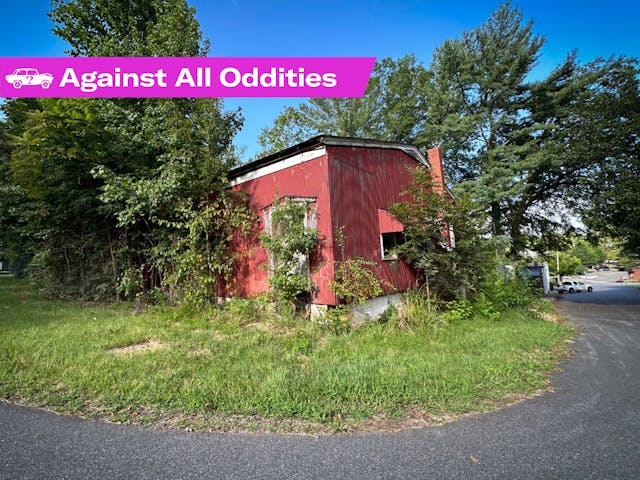
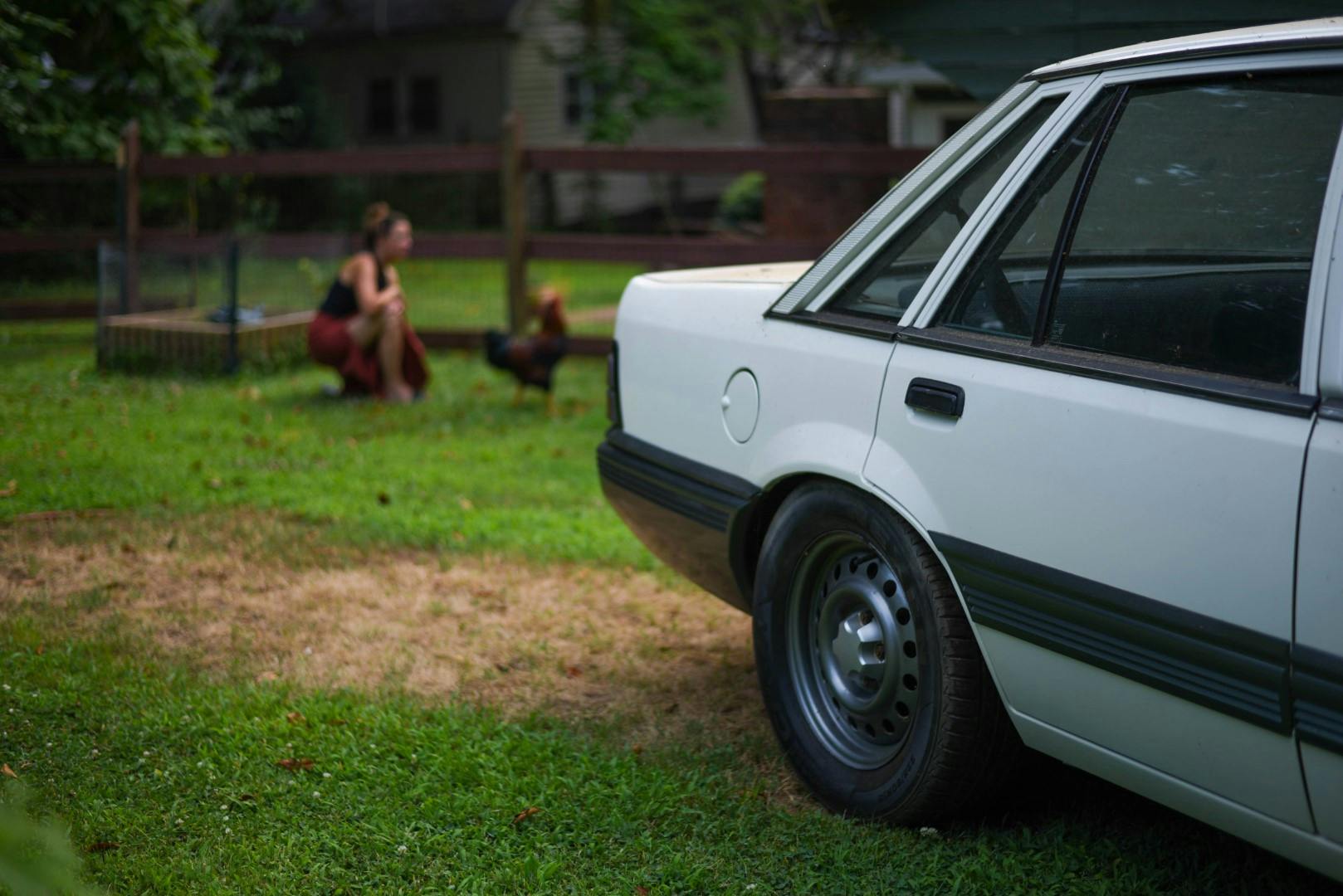

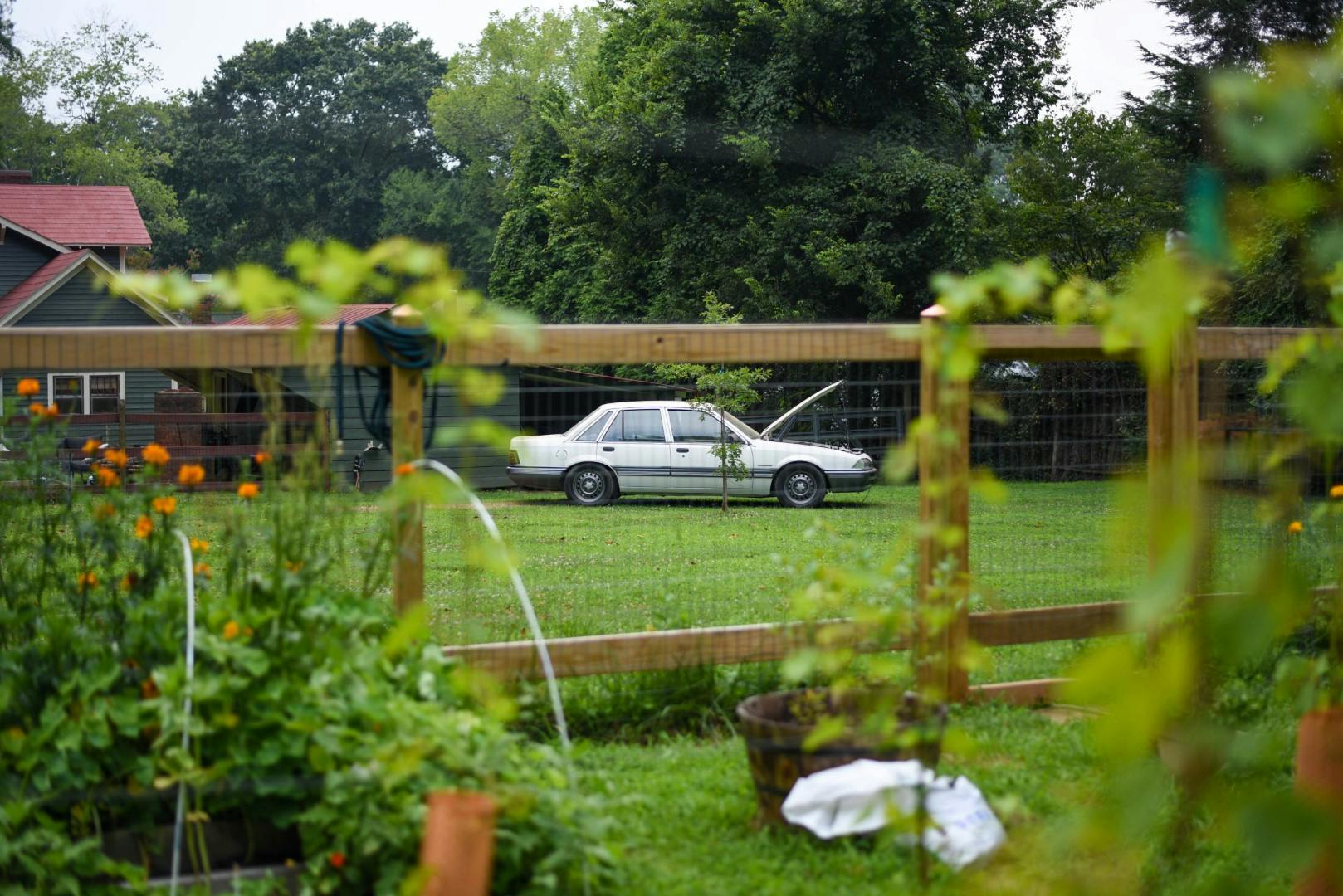
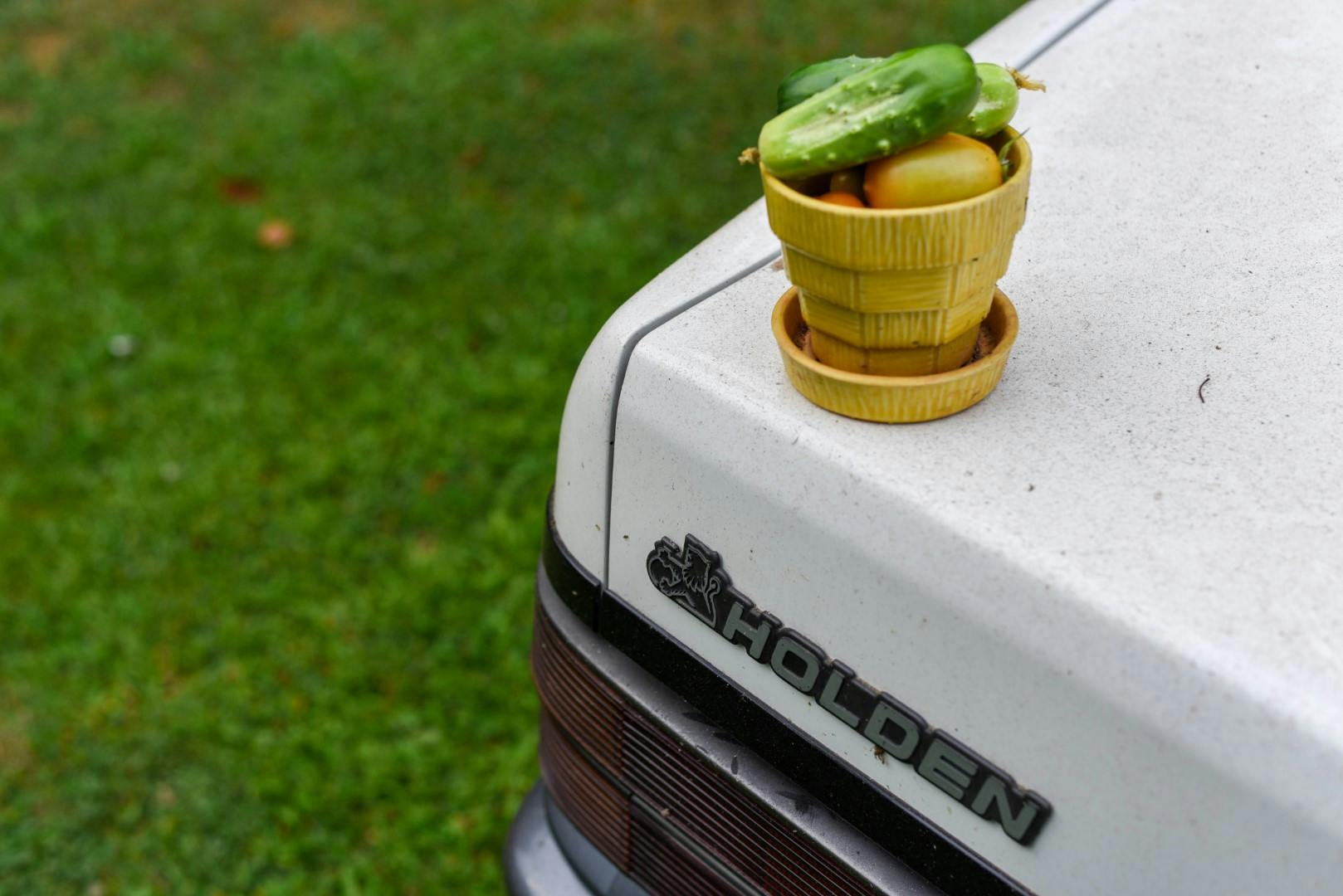
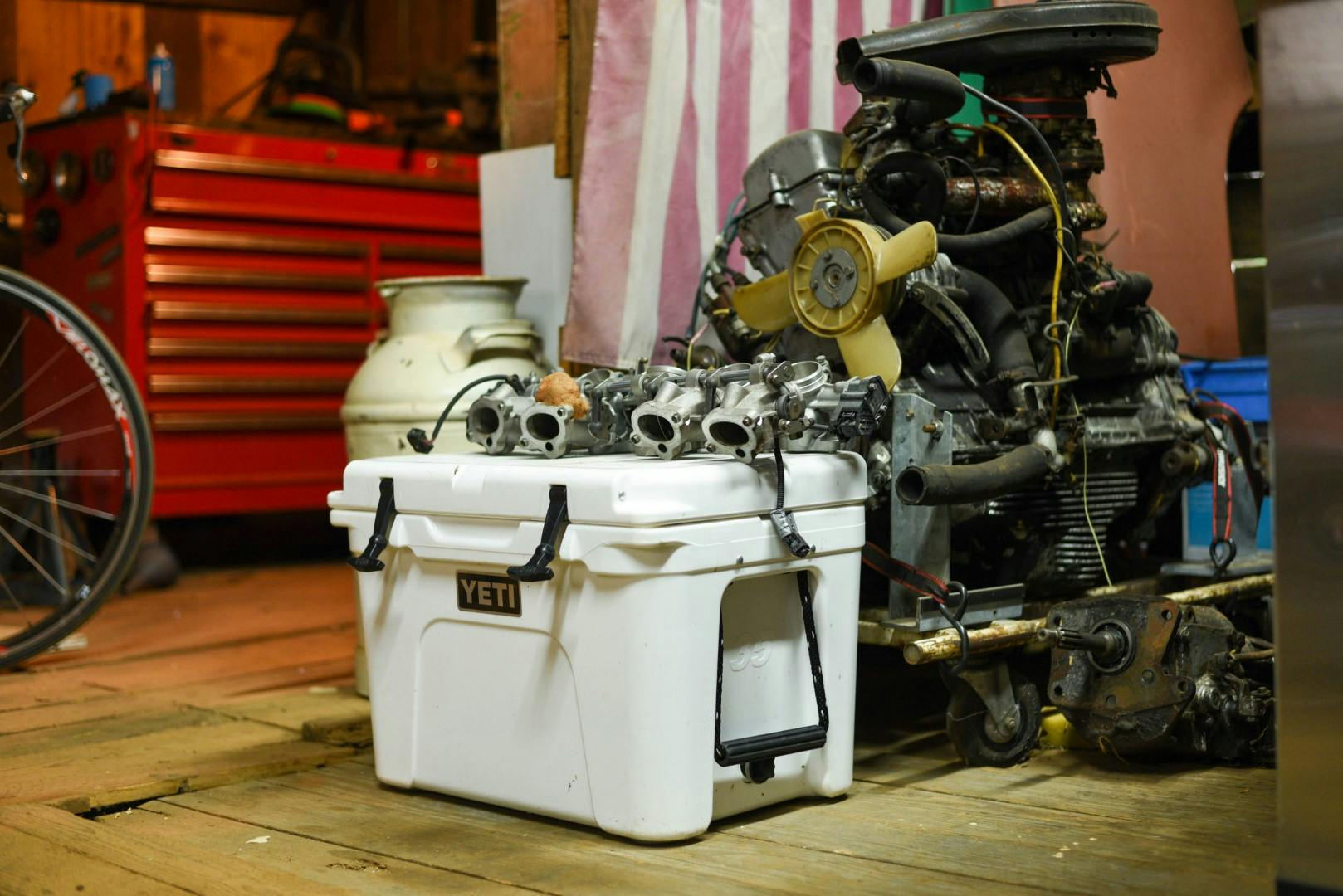
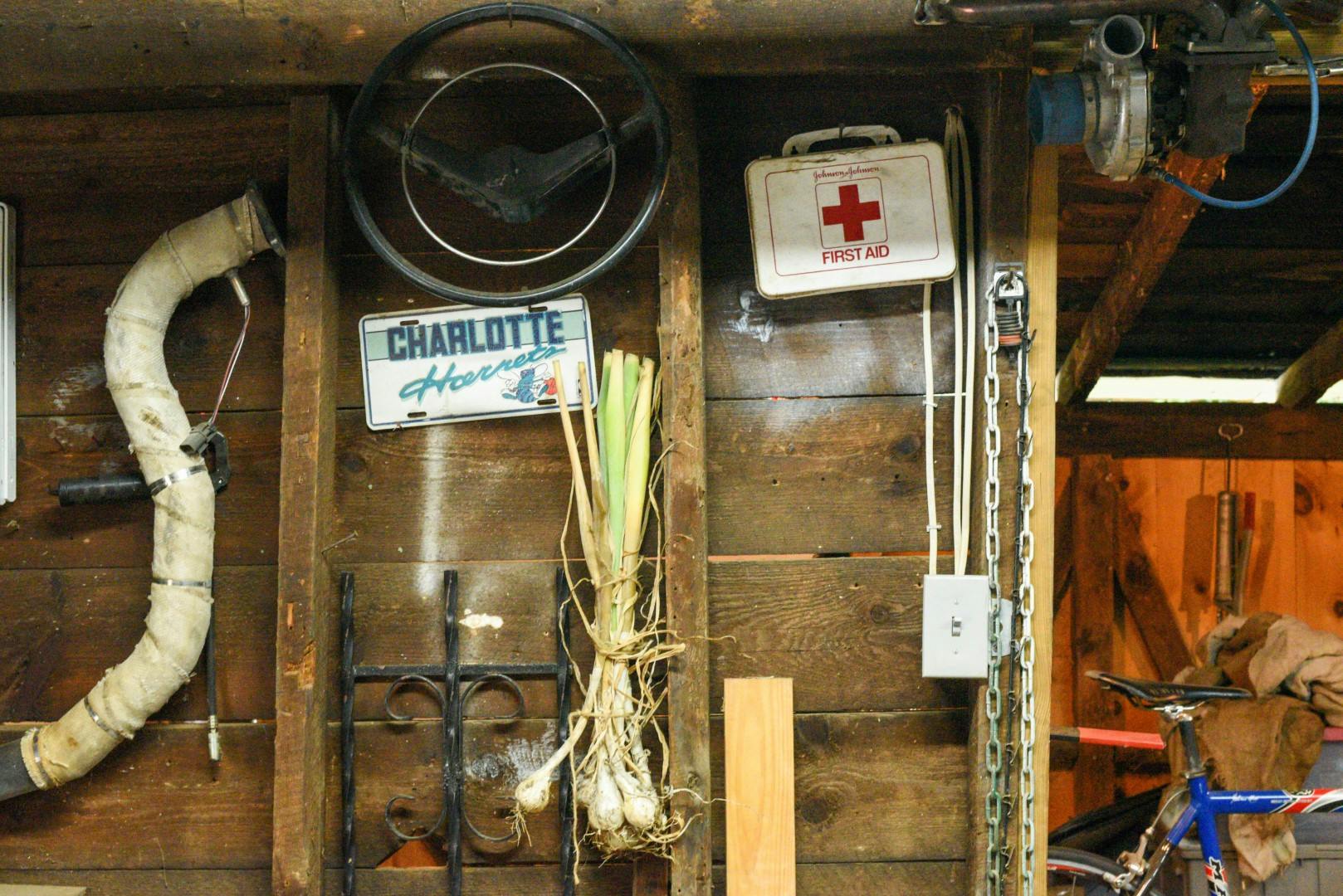

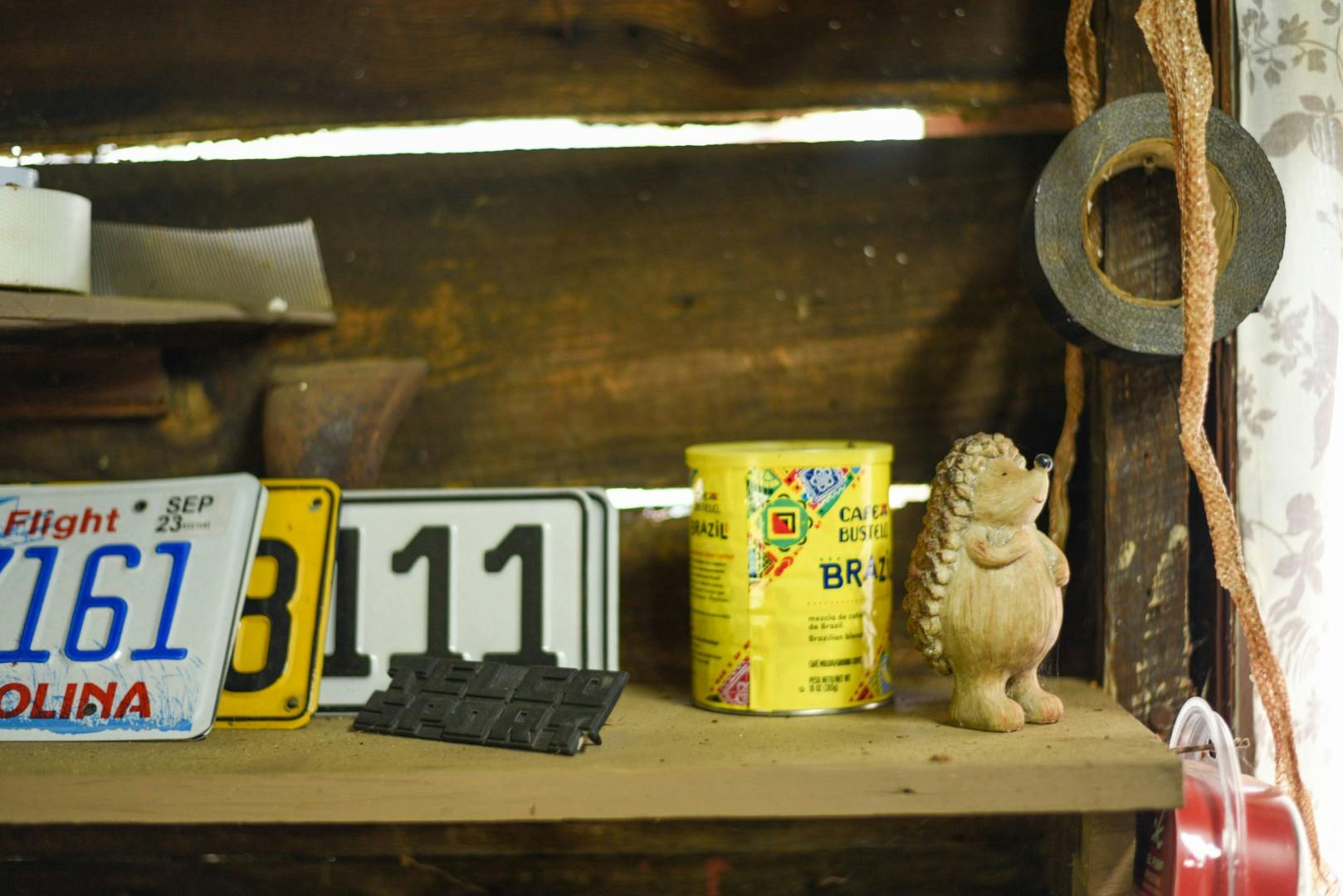
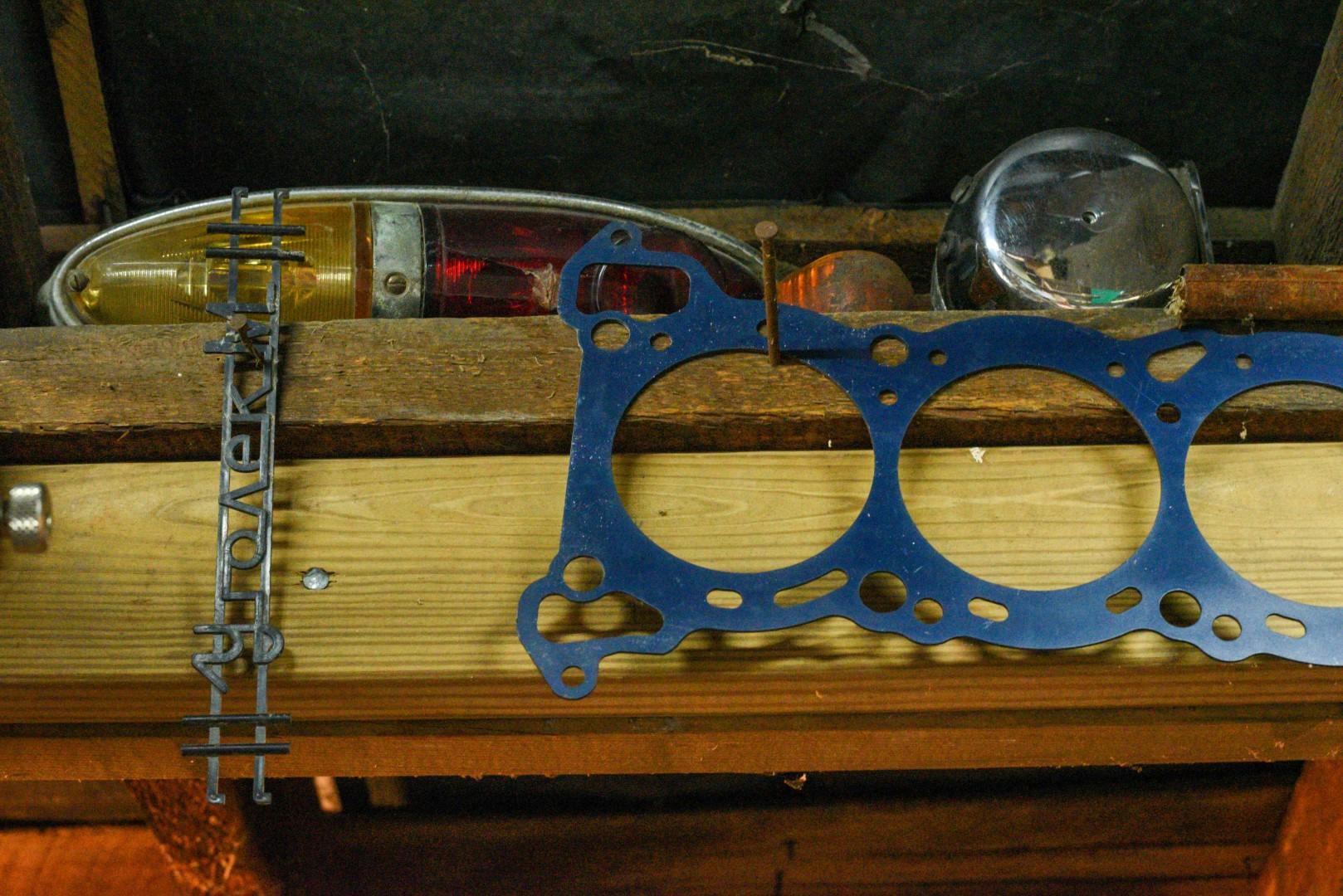
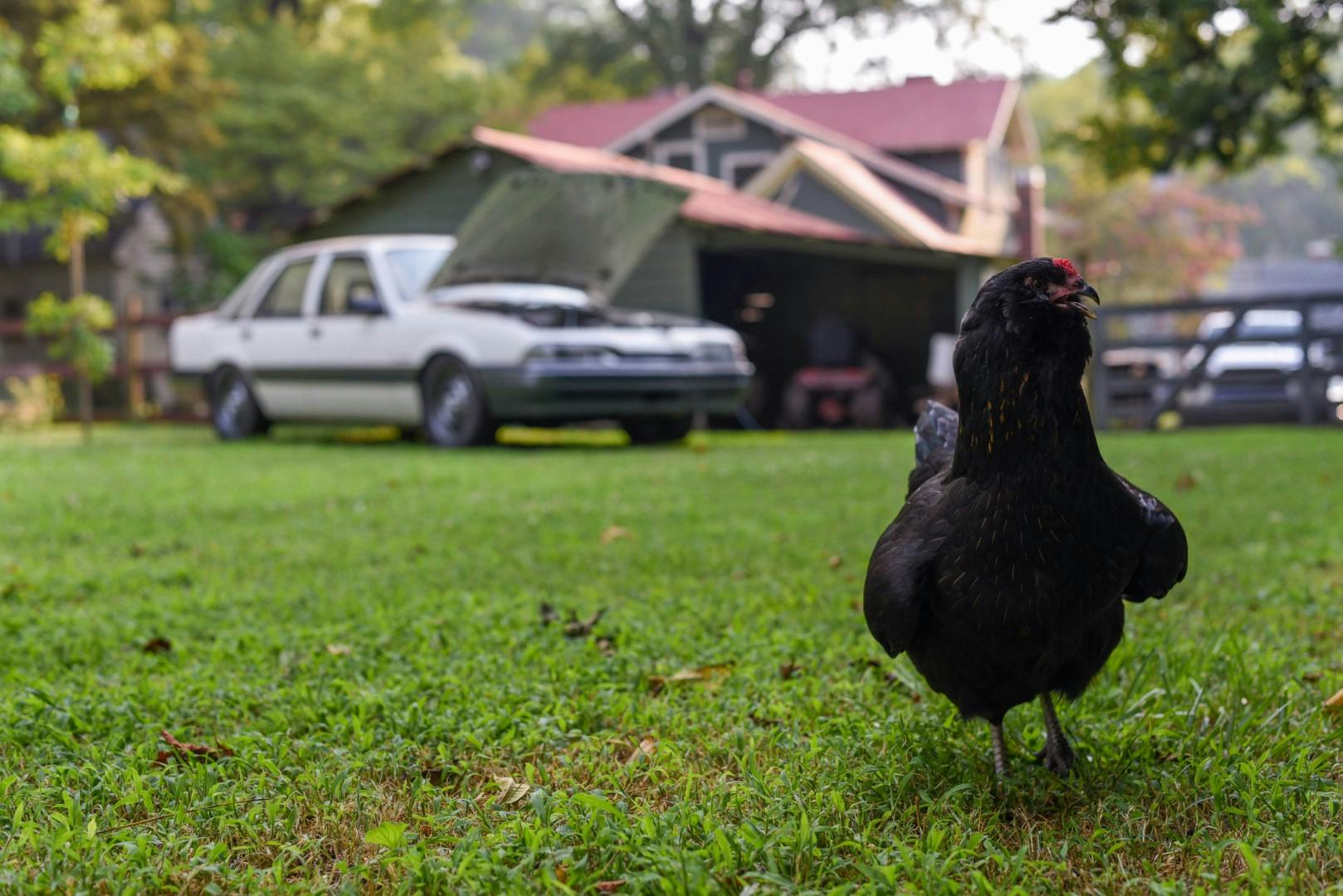
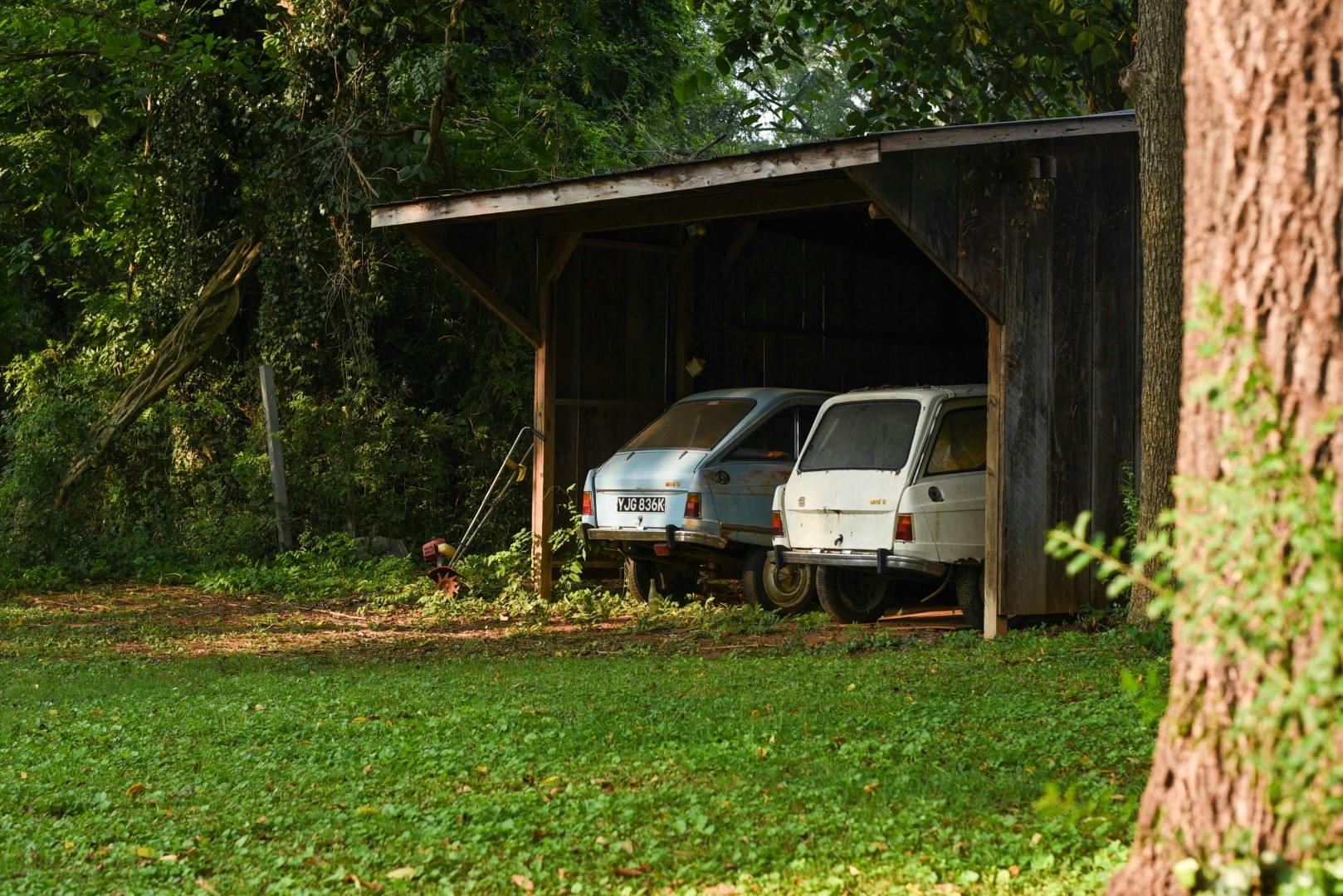
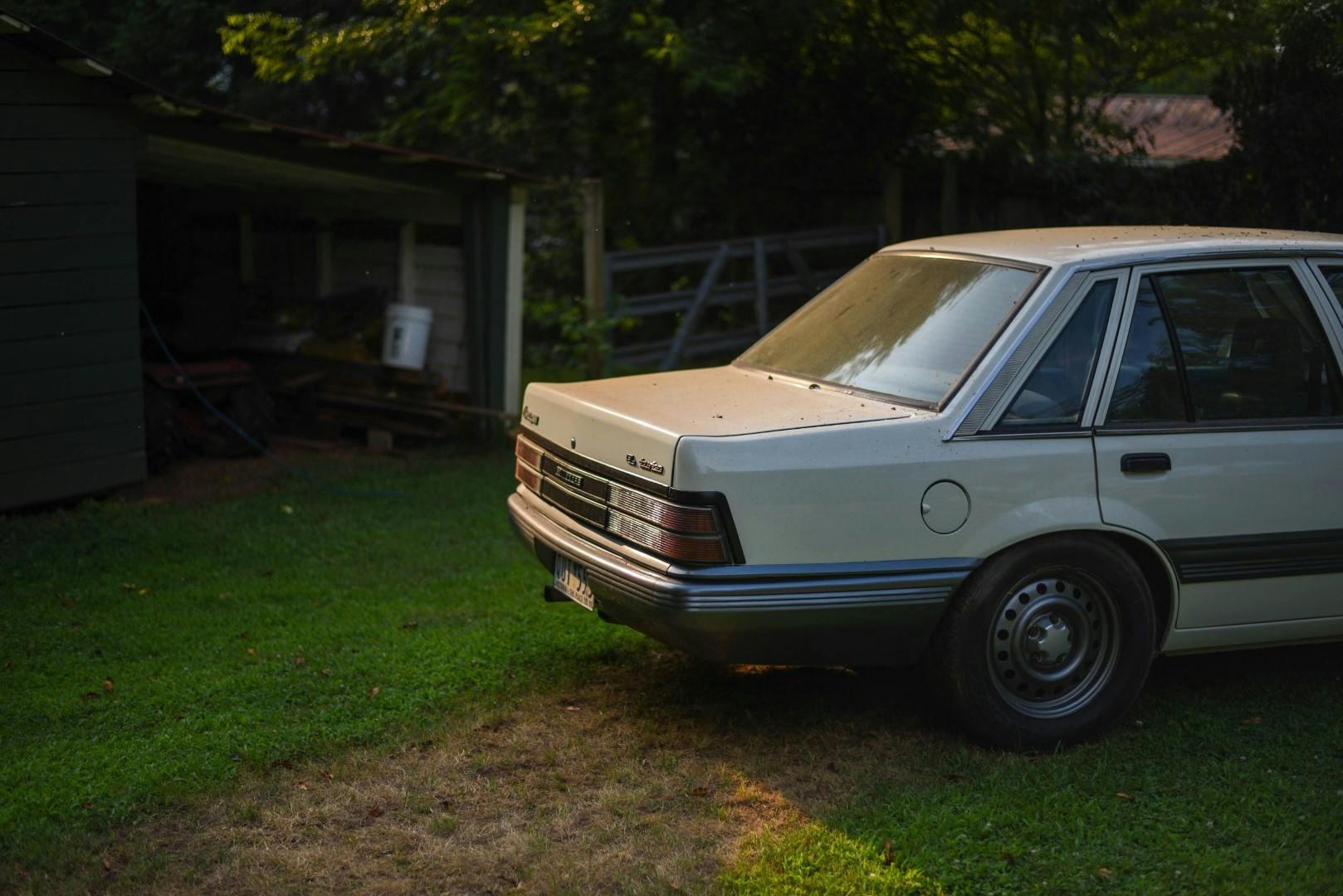
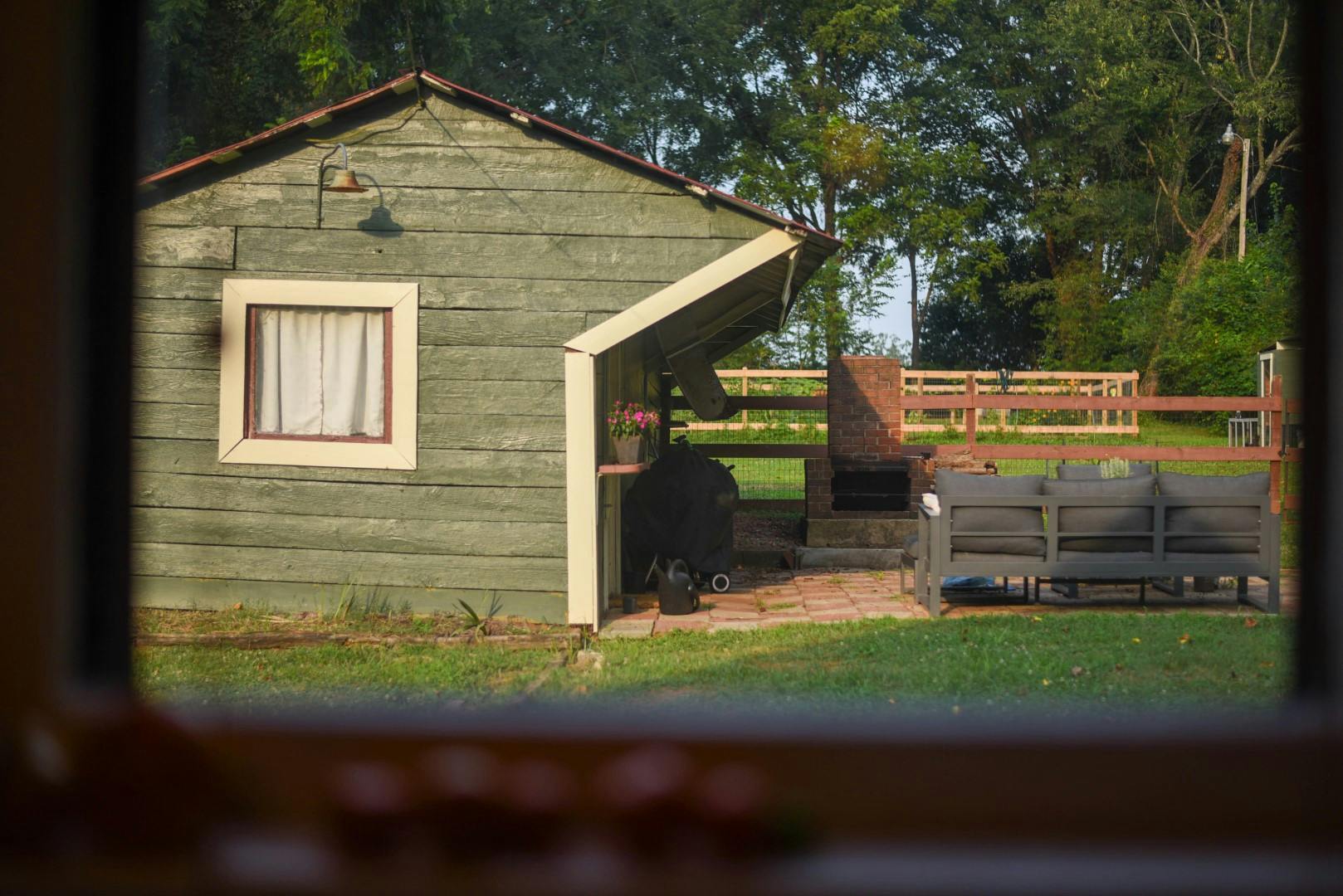

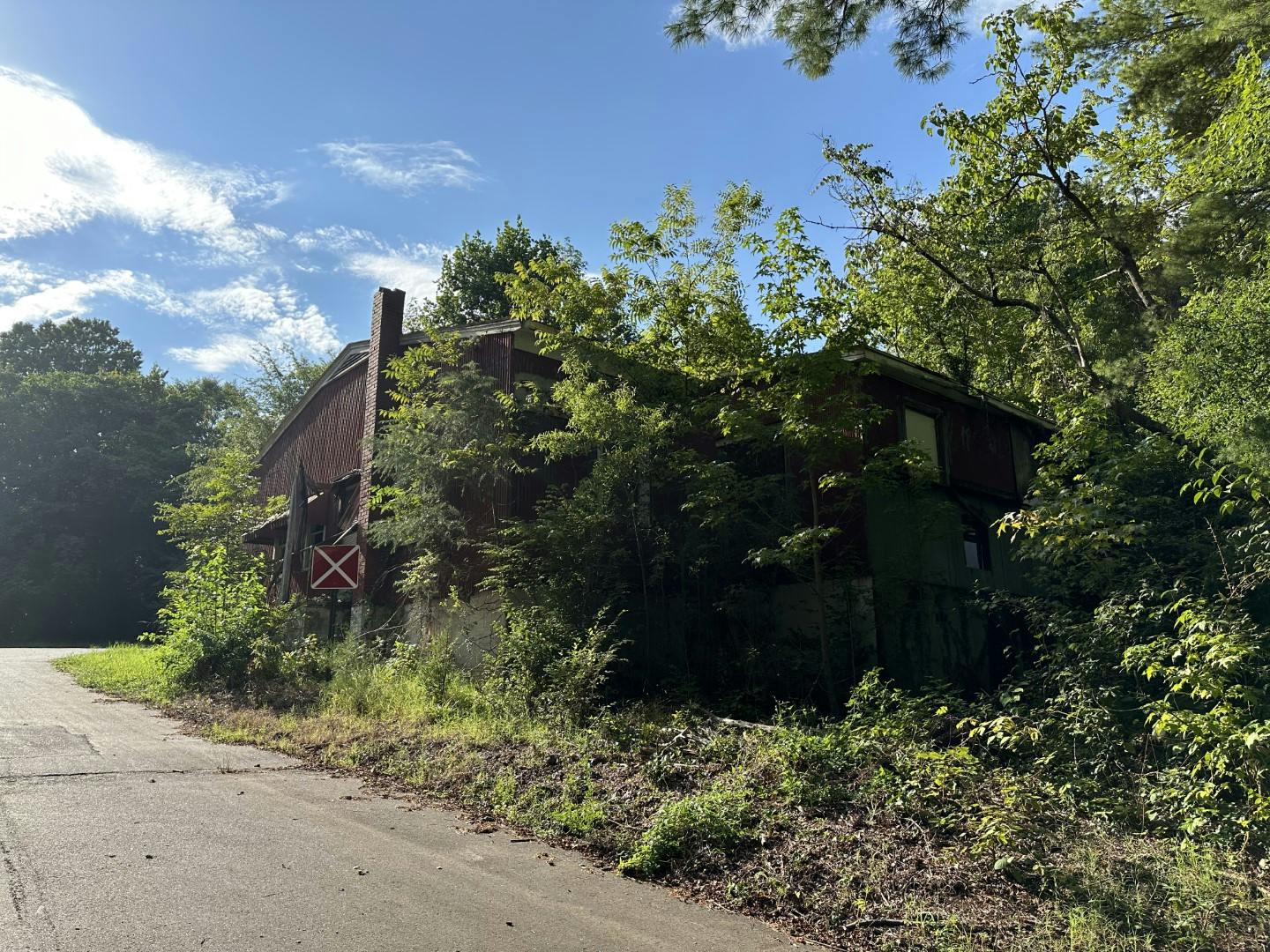
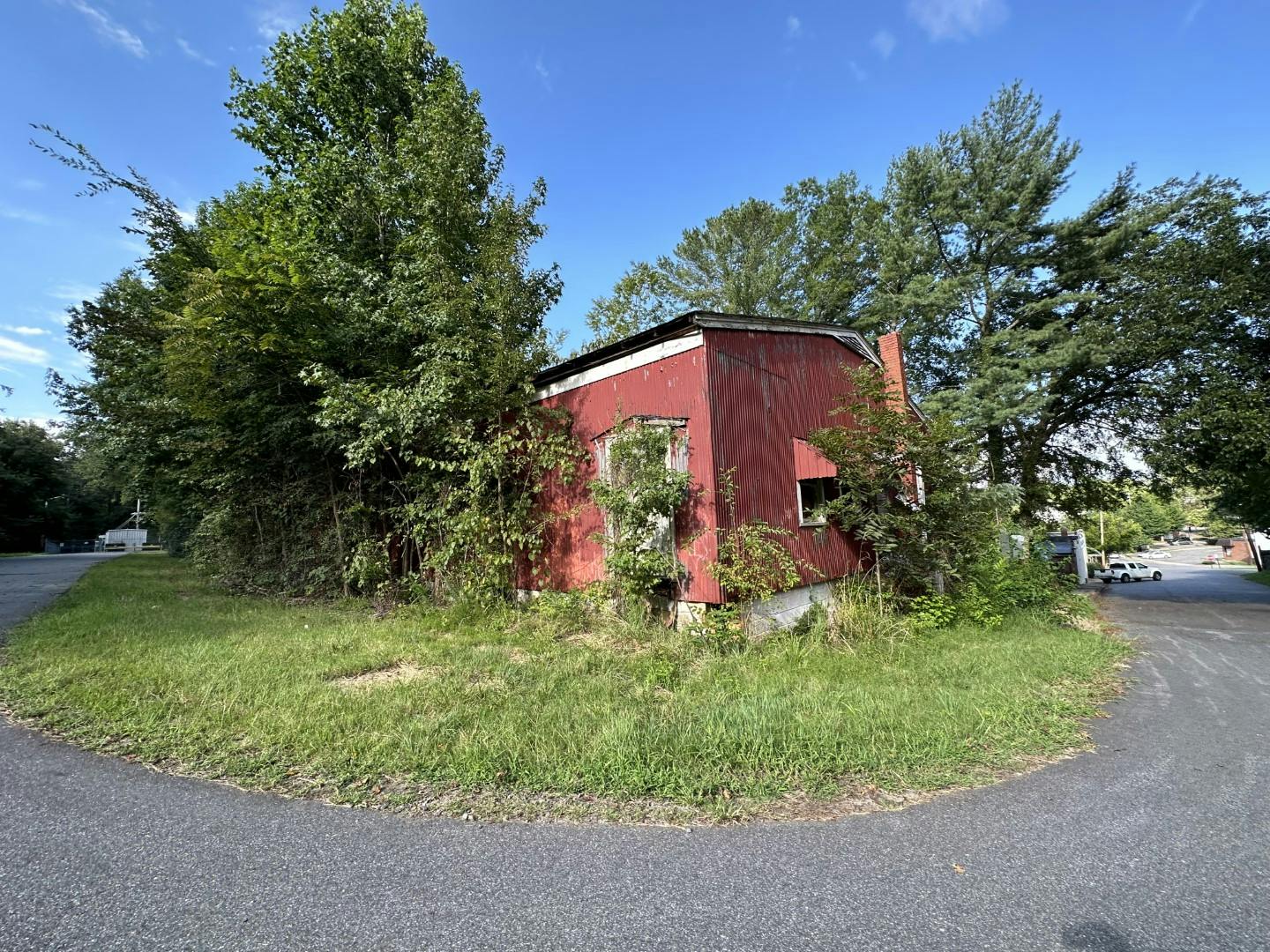
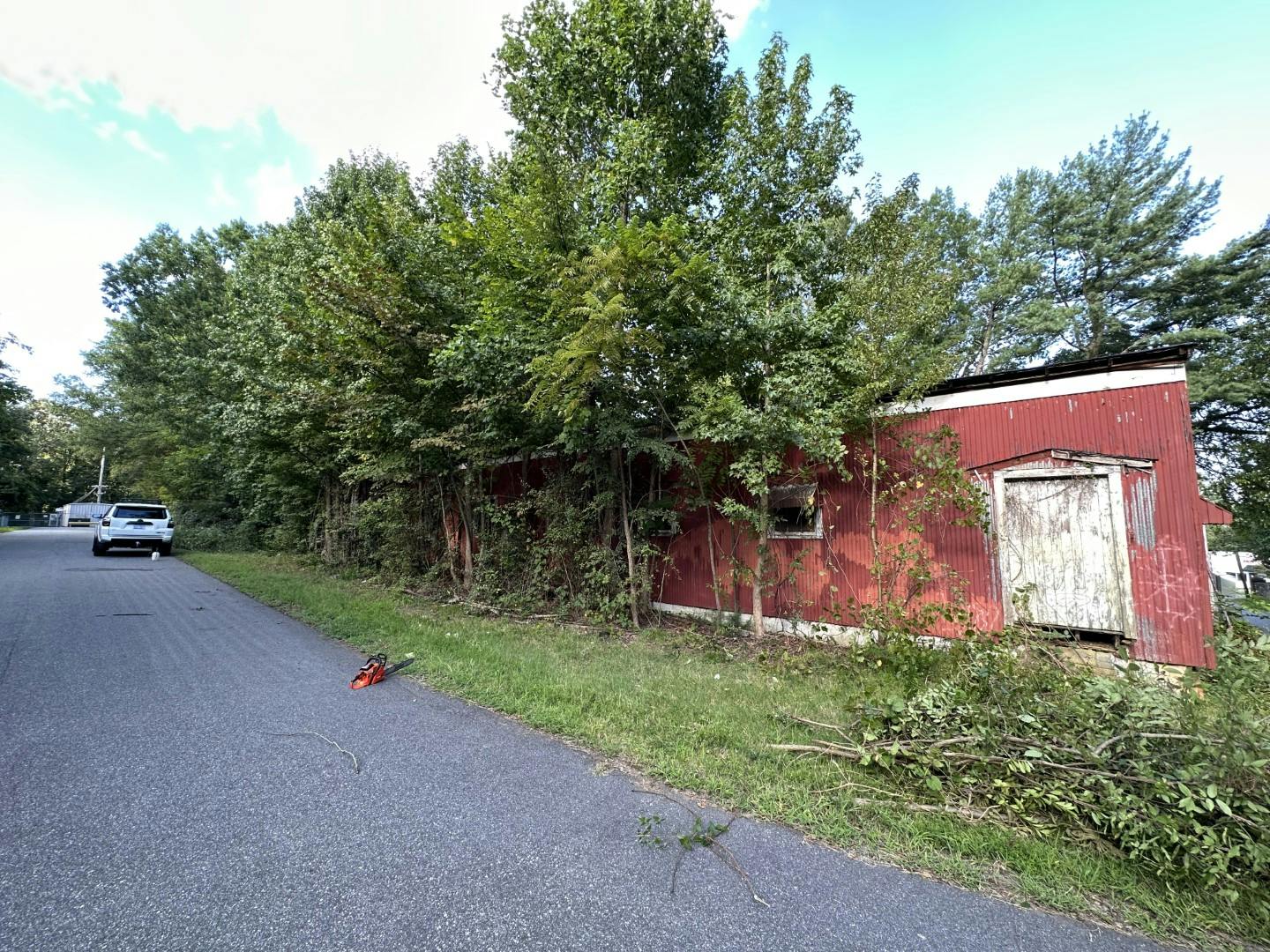
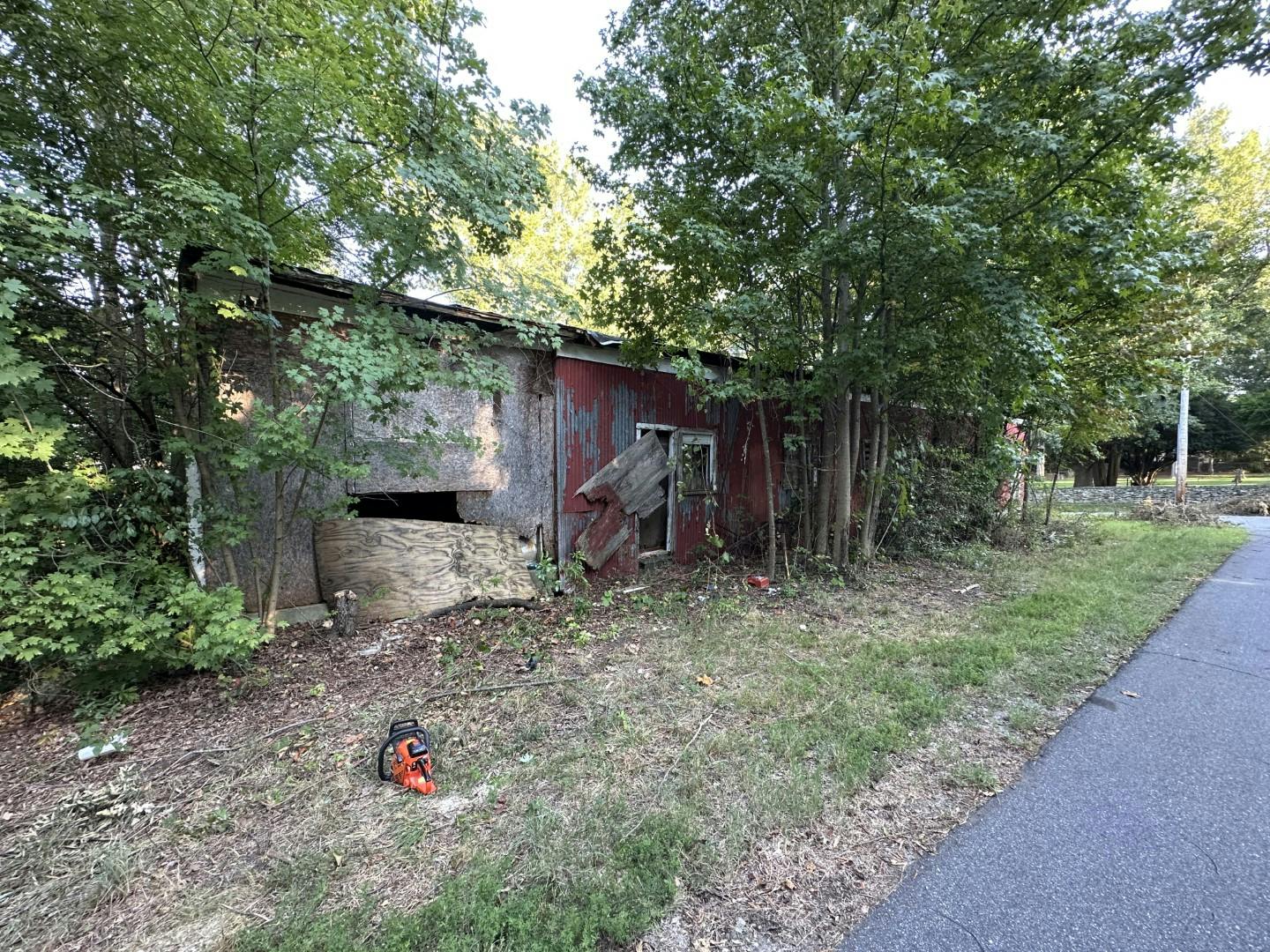
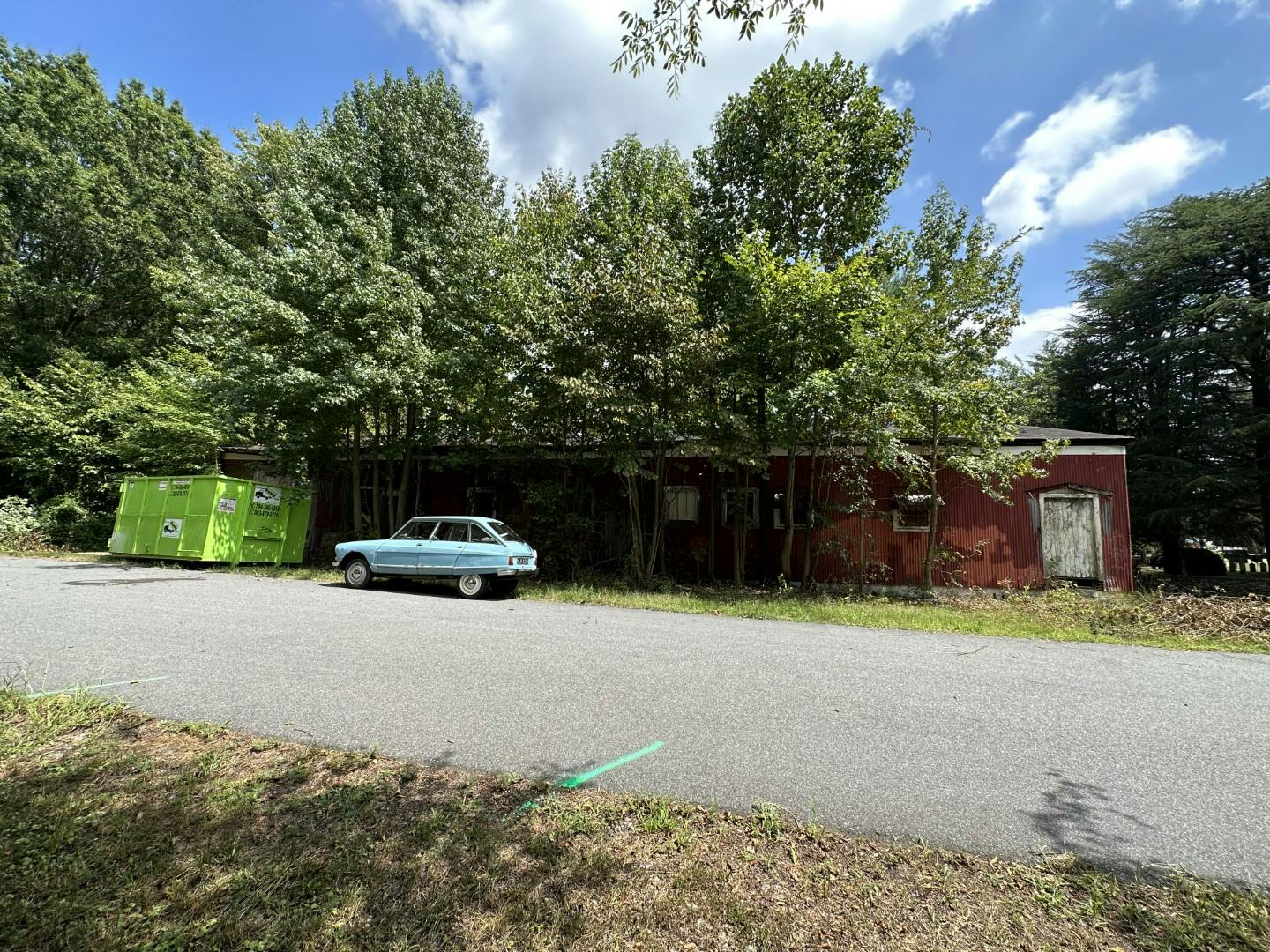

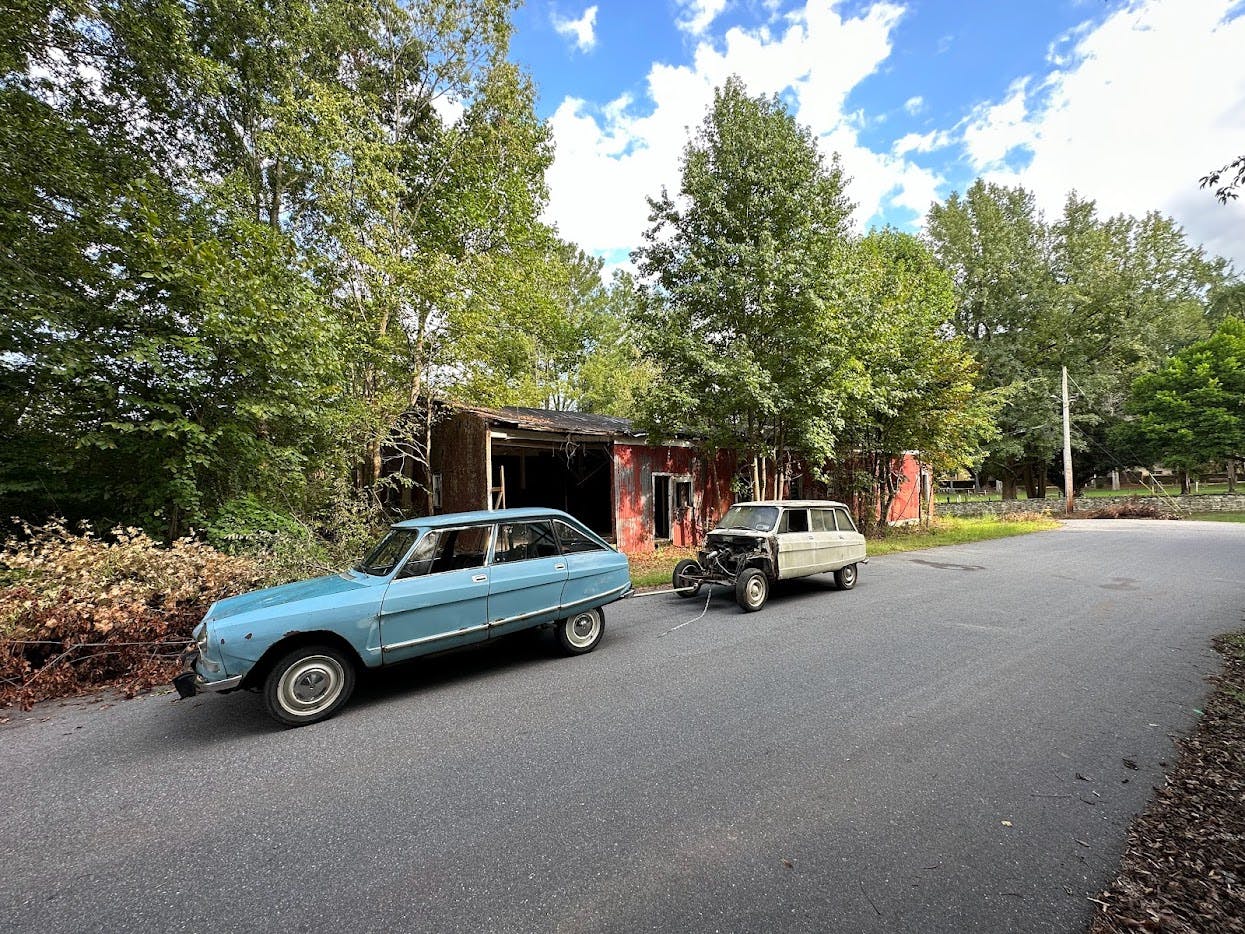

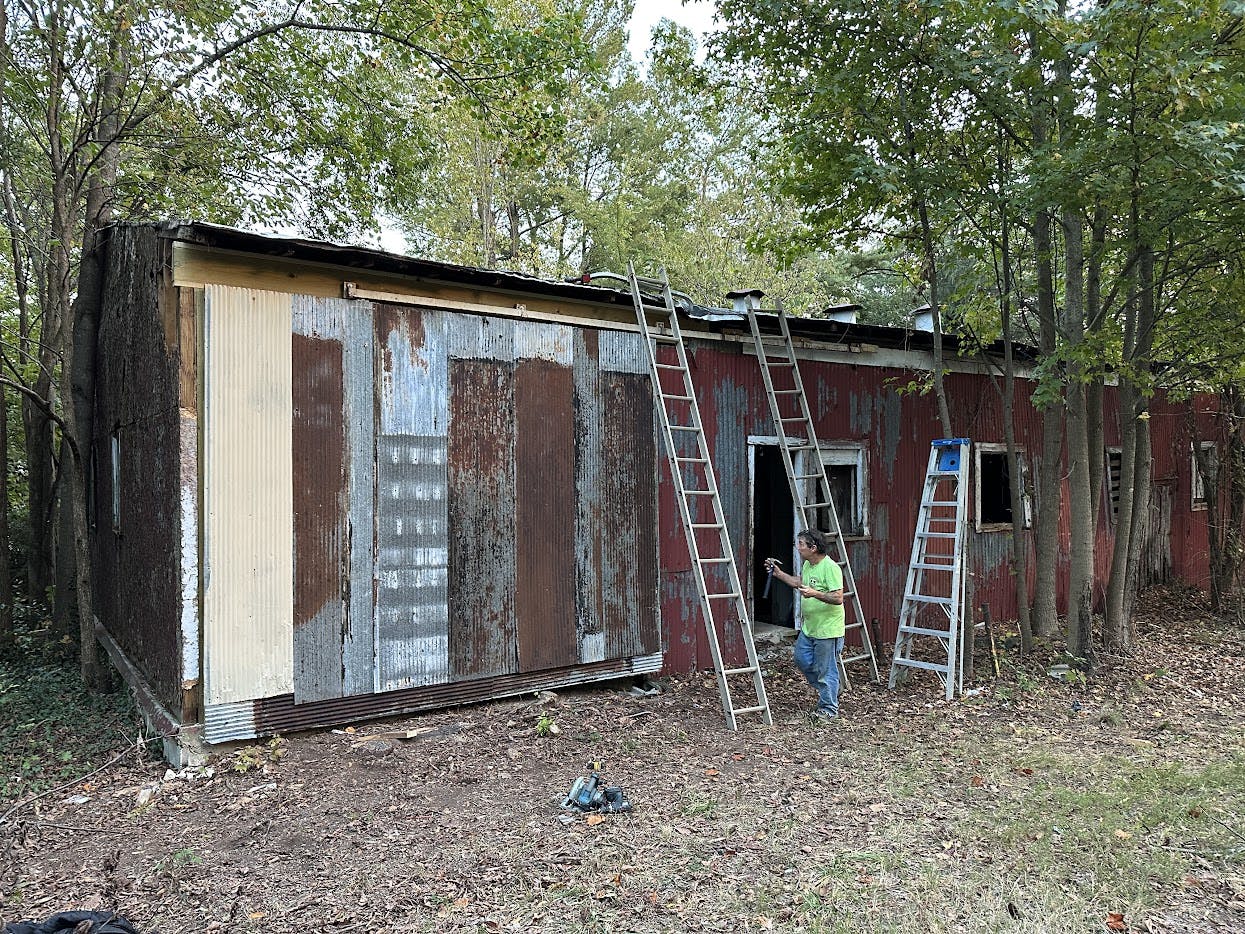


This. This is what is meant by making lemonade from chicken poo – or some such mashup. At any rate, it’s a fun read and a laudable plan. Here’s wishing it works out even better than imagined! 👍
Thanks! It’s fun partially because I have no idea what’s going to happen. Just naïve optimism!
Way to go Matthew, you in-blight a neighborhood building, help a local independent business, find storage for your collection, and do it economically. Small communities need more resourceful thinking individuals like yourself. Now there are any number of abandoned sprinkled through out the mid south you should attend community development meetings and spread the word. Five ⭐️ ⭐️⭐️⭐️⭐️
Thanks! I actually just got elected to the historic preservation committee in town!
I’m not sure why I’m getting this feed almost a year later, but no matter. It’s timeless. Anyways, my collection consists of 20 cars, so I’m thinking this is a perfectly viable option.
Trail cams (as used by hunters to observe animal activity) could provide a measure of security, and run off batteries.
This, I was also thinking this, and some can be had with sim cards for LTE connectivity, so for the nominal cost of some cheap pre-paid sims you could have easily accessible live feeds vs having to go check the footage on an SD card.
I’ll check that out. Trail cams had crossed my mind but I know I’d basically never check them unless I noticed something happened a week late. 4G trail cam could be ideal.
I suspect “Solar Powered Yard Lights” experiment leading to interior lighting as the next article. Please include any and all permit/zoning steps for this project.
Remember this is South Carolina, not Los Angeles.
This series is just right. I never thought I’d enjoy reading so much about where to store one’s cars.
That’s a good plan, especially given the limited daylight this time of year. I have done some poking about zoning but everyone has just told me to keep doing what I’m doing and don’t ask questions.
Great story. Please make it a running piece i want to see the progress. Wish i was closer i would though in some sweat equity. I have a similar problem with a car addiction and have cars in 3 different places. So i feel your pain.
Thanks a lot. I had been thinking of doing some neighborhood work parties out there. I have gotten some interest in the idea of a community garden to keep the area a bit more well traveled and kept up.
This sounds like an interesting project. Keep us updated.
Will do! Hoping to put another few days in after Thanksgiving.
Oh, you lucky, resourceful devil! Congrats. This is the holy grail — dry storage, and lots of it, within walking distance. Enjoy!
HelenC and the others above well sum it. Meanwhile, any port in a storm.
That should have been the title of the article!
Raging against entropy. I salute you sir.
Cool. I know that area pretty well, and had guessed the region from the intro photo. Sounds like creating a nice opportunity overall. Well done.
20 years ago I purchased a huge former textile mill also north of Charlotte with the intention of storing my larger-than-necessary collection. Today AutoBarn stores more than just my cars, but about 150 cars of other area enthusiasts. These old structures are stout, and perfect for automotive repurposing.
Good luck!
What kind of insurance do you have?
Rob Siegel must be at least a little envious, too bad he is not closer to you, look like something he would like!
I’m a sucker for derelict buildings. From ’85 to ’90 I had a small company that built custom boat trailers for boat dealers. Margins were tight and the only buildings I could afford were those left for dead. The smaller ones were not as bad as the writer’s, but heating in the Ohio winters was a challenge. Paint runs off on the floor if it’s too cold.
As time went on I picked up more dealers and made more trailers. Trailers were 18′ on up to 33′. Small buildings were out of the question by them. I happened to know of an old stamping plant in my hometown that sat empty for years. I had a real estate agent cut me a lease deal for way more than I could afford, but I was able to store boats cars and RV that helped pay the rent.
Imagine the building the writer found and multiply that by a very large number. The plant had housed large stamp presses that took cranes to remove, and covered 132,000sf. Unfortunately, a large part of the building had roofs that were good unless it rained.
One warning about old building. Avoid the old drains that who knows what has lived in. Like the writer’s health problem, I ended up with pneumonia.
Those were my younger days… In the end I ended up making over 500 trailers in 5 years, for about a million dollars in sales.
If only there were such buildings in affordable state in my neck of the woods!!
This is my dream storage solution. Great find! Between you and Rob, I adore these “car hoarding and the problems they bring” adventure pieces.